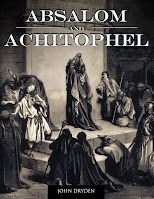On a 30th M.K. Bhavnagar University Youth Festival 'Amrut rang' is going to be hosted by the 'Takshila institute of commerce ' Bhavnagar University, the preparations are in the final stages of which the program from the inauguration to the conclusion has been drawn up.
Even in general conversation, Bhavena is addressed as Kalanagari and Bhavnagar has given many artists, while the days of Yuvak Mohotsav, traditionally held by Bhavnagar University. From the 19 to 21 September 2022 , M.K. The 30th Youth Festival Amrut rang has been organized under the auspices of the Takshashila institute of commerce of Bhavnagar Universrsity.
First we can see a time table of youth festival
Kala yatra
Youth festival start with a kala yatra on 18 th September 2022. On 4:30 o'clock. The route was from Victoria Park Water Tank to the University Amphi Theatre.
The Name of Youth Festival was given this time
"AMRUT RANG- YUVA URJA MAHOTSAV 2022"
First Day
Opening ceremony
The opening ceremony was on 19th September in Amphi theatre. Chief guests of the opening ceremony were Safin Hasan sir, IPS officer of Bhavnagar District, SP officer of Bhavnagar,, Kirtiben Dhanidhariya, Mayor of Bhavnagar, Abhishek Jain- Filmmaker and Jitubhai Vaghani, honorable Education minister of Gujarat.
Introduction of place
All event are organised in 5 place of University
1. Atal Auditorium
2.Old court hall
3. External Department
4.Amphi theatre
5.English Department
Atal Auditorium
Mimicry
Only Four participants were there in mimicry. There voices like of birds, animals, insects, train, ghost, vehicle, etc.
Mime
Mime means "the theatrical technique of suggesting action, character, or emotion without words, using only gesture, expression, and movement."
Gaming which is diverting youth
75 years of independent India, freedom movement, war
Let's support our Nation in every possible way
Robotics element in Human in Current time
Pain of animals in Circus
યુદ્ધ નહીં બુદ્ધ
Hardships and risks at Circus. Though they wear a smile to entertain others, forgetting their pain and sufferings.
Amphi theatre
1. Lok nruty
Old court hall
1.Bhajan
2.Sugam sangit
External Department
1. instant drowning
2. college
English Department
1. Question - Answer
2.self written poem recitation
Day -2 Date 20 September
Amphi theatre
1. Group song western
2. Solo song western
Atal Auditorium
1. One act play
Concept of ordeal of Sita in Ramayan
Condition of Draupadi and Shurpankha
Marrital rape
Women as property
Gange rape of Aasifa
2. Mono acting
3.Classical dance
4.skit
Themes of Skit were were,
Girl child education
Condition of women
Inflationary and Education, Education business and Education institution as a factor
Education system: too much load on children
Old court hall
All events based on classical formet
External Department
Drowning
Festival of Navratri
Azadika Amrit Mahotsav
Village marriage
poster making
Topics:-
Among people
Youth Festival
Nature and I
English Department
Essay writing
Topics:-
Two steps towards Nature
Fatal Factors of Democracy
If Humans can know the Future
Health is Wealth
Mobile Phone - Useful or Useless?
Short film
Seven colleges participated in the Short film. It concludes short films,
Magic Box
Zamku
Three
Fake it till you make it
Bhavnagar
Maharajshree
Swatantra Sangram
Day -3 on 21 September
Amphi theatre
Group song Indian
External Department
1.Rangoli
2. Installation
Topics:-
Cleanliness
Freedom
Culture
Old court hall
Dibet
Closing ceremony
On the closing ceremony some guest are coming like Dr. Chetan Trivedi, Vice Chancellor of Bhaktkavi Narsinh Mehta University, RJ Akash and Singer Ishani .Dave were present.
Swami Sahajanand College of Commerce and Management won the General Championship of the MKBU Youth Festival 2022. Sardar Patel Institute has become First Runners Up. Here is glimpse of that.
This time management committee had provided Rikshaw in the University area to help students and others to reach the event place. It became helpful to all.
Student of English Department
The students of the department of English participated in 17 events. Out of these we have secured Champion in Elocution, first runner-up up in Mono acting and Debate and Second runner up in Western solo song, Clay Modelling, Rangoli, Short film, poetry recitation and essay writing.
- Elocution - Dhvani Rajyaguru
- Mono acting- Dhvani Rajyaguru
- Second in Debate - Rajeshvariba Rana and Kosha Bhatt
- Western solo song - Emisha Ravani
- Clay Modelling and Rangoli - Jheel Barad
- Short film - Divya Sheta , Divya Parmar , Rajeshvariba Rana, Himanshi Parmar , Nilay Rathod
- Essay writing - Divya Parmar
- Poetry writing and recitation - Himanshi Parmar



















